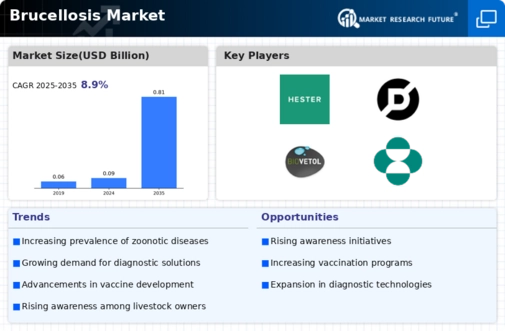Brucellosis Size
Brucellosis Market Growth Projections and Opportunities
The brucellosis market is heavily driven by prevalence and incidence rates. High rates increase demand for diagnostics, treatments, and prevention. Geographic distribution of brucellosis is important for market planning. African, Middle Eastern, and Asian areas with high rates of the condition fuel medicine and diagnostic technology market growth. Agricultural activities, notably cow farming, transmit brucellosis. Livestock management and trading may affect disease transmission patterns and the market. Information on brucellosis and its effects may increase interest in prevention, diagnosis, and treatment. Early detection and prompt response enabled by information may boost market development. Government disease control and preventive measures are crucial. If regulatory frameworks, vaccination efforts, and public health initiatives are established, brucellosis products and services may change considerably. Brucellosis research and development are essential to developing new diagnostic tools and alternative treatments. Medical advances may alter the market by introducing more effective and efficient solutions. The global economy and rising international travel spread infectious diseases like brucellosis. This variable affects demand for related goods and services, changing market dynamics. Because similar incidents may occur in unexplored areas. As a zoonotic illness, brucellosis requires human-animal contact. Zoonotic transmission patterns may affect market trends, particularly in areas with substantial human-animal interaction. The market may be affected by molecular and serological testing that increase brucellosis diagnosis accuracy and efficiency. Availability of reliable diagnostic instruments may drive market expansion. The market is affected by brucellosis treatments like antibiotics. If medicine availability or pricing obstacles are high, the market environment may suffer. Worldwide cattle trading laws may affect brazosis spread. Stricter animal transportation regulations may raise the number of instances of the sickness in various regions. Ecosystem and climate change may affect brucellosis distribution and prevalence. These factors' habitat changes for microbes and vectors may affect the market as a whole.








Leave a Comment